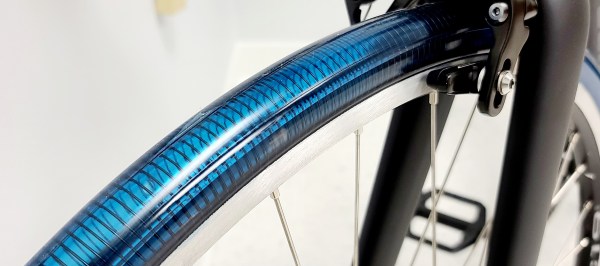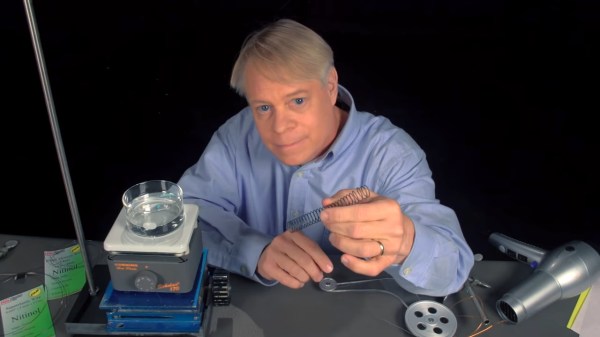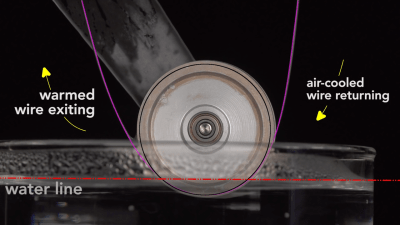Another Kickstarter, another opportunity for people to get mad at delayed and poorly functioning (if delivered at all) gadgets. This project aims to make airless tires for bikes and scooters using nitinol, and despite the company’s failed attempt at pedaling their wares on Shark Tank last year, the campaign has already more than quadrupled its funding goal.
The real star of the show here is NiTinol, a shape metal alloy composed of nickel and titanium. We should soon see a real commercial application of this miracle metal, and not long after we’ll see what happens when the rubber meets the road on these airless tires and their long-term performance. It’s not accurate to say they don’t use rubber; they just use LESS, because they’re still treaded, albeit with a layer that is adhered to the metal coil, and you don’t need tubes, either. The tread will still wear down and needs to be replaced occasionally for the lifetime of the tire, but the real advantage is never having a flat tire again. Considering how inconvenient flats are and the number of meetings I’ve been late commuting to because of an unplanned rapid deflation, these tires might be worth it. If you’re wondering why they’re so expensive, some napkin calculations of the nitinol coil have somewhere between 100 ft – 200 ft of wire per wheel, and at $1-2/ft, the raw materials alone before assembly make it an expensive piece of kit.
So what’s so cool about nitinol that it’s worth playing with, and what does it do that spring steel or stainless steel can’t? Well, you can soak it in acid for a year, and it will continue unaffected. It has excellent bio-compatibility, so you can put it in someone’s arteries as a stent, and it will go through tens of millions of cycles without cracking. It’s 10 times better at recovery and lighter, and it’s not magnetic, which can be useful. The memory capability is handy, too, because it means you can rapidly prototype springs, then heat and quench them to set their memory and easily adjust them.
Admittedly, I don’t have a use for it right now. But just like the coils of nichrome and piano wire waiting anxiously in my bins for their opportunity to shine, nitinol is screaming for a fun use.




 Has this material science excursion bored you to tears yet? That’s why we love [Bill’s] work. He has always done a fantastic job of demystifying common mysticism and this is no different. The video below does a much better job of illustrating what we’ve described above, but also pull out a Nitinol engine for added wow-factor. A straight piece of Nitinol is bent into a loop around two pulleys. The lower pulley is submerged in hot water, causing the Nitinol to want to straighten out, but it loops back to the top pulley, bending and cooling in the air and creating a lever effect that drives the engine. We saw
Has this material science excursion bored you to tears yet? That’s why we love [Bill’s] work. He has always done a fantastic job of demystifying common mysticism and this is no different. The video below does a much better job of illustrating what we’ve described above, but also pull out a Nitinol engine for added wow-factor. A straight piece of Nitinol is bent into a loop around two pulleys. The lower pulley is submerged in hot water, causing the Nitinol to want to straighten out, but it loops back to the top pulley, bending and cooling in the air and creating a lever effect that drives the engine. We saw 









